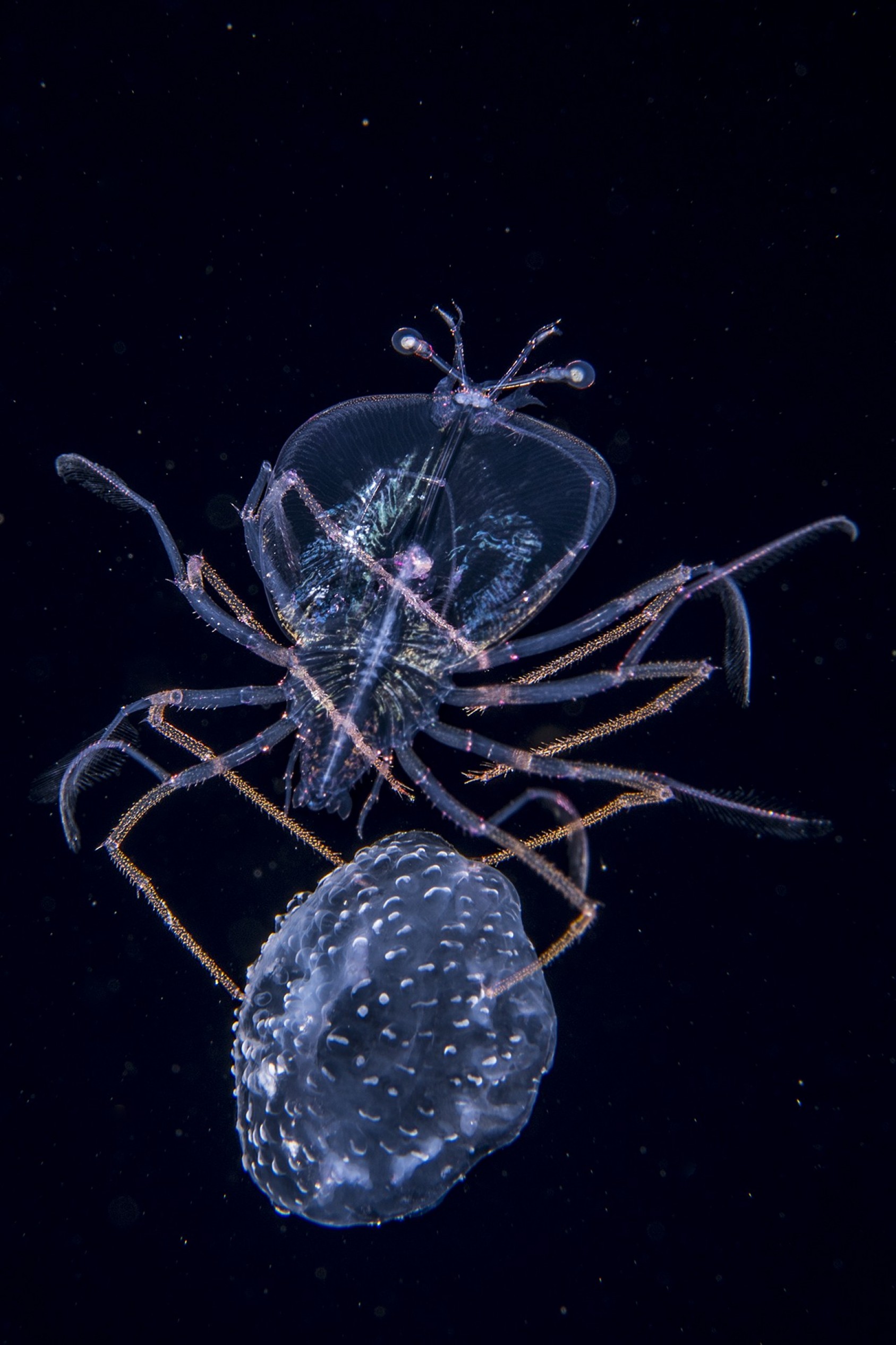
The Winners Of The NHM Wildlife Photography Awards
The jellyfish jockey
Anthony Berberian, France
Winner 2017, Underwater
Nikon D810 + 60mm f2.8 lens; 1/250 sec at f22 (?0.3 e/v); ISO 64; Nauticam housing + Nauticam SMC-1 super-macro converter; Inon Z-240 strobes.
In open ocean far off Tahiti, French Polynesia, Anthony regularly dives at night in water more than 2 kilometres (1. miles) deep. His aim is to photograph deep-sea creatures – tiny ones, that migrate to the surface under cover of darkness to feed on plankton. This lobster larva (on top), just 1.2 centimetres (half an inch) across, with spiny legs, a flattened, transparent body and eyes on stalks, was at a stage when its form is called a phyllosoma. Its spindly legs were gripping the dome of a small mauve stinger jellyfish. The pair were drifting in the current, the phyllosoma saving energy and possibly gaining protection from predators deterred by the jelly’s stings, its own hard shell probably protecting it from stings. The phyllosoma also seemed able to steer the jelly, turning it around at speed as it moved away from Anthony. The odd thing about the jelly was that it had few tentacles left, suggesting that the little hitchhiker was using it as a convenient source of snacks. In fact, a phyllosoma has a special digestion to deal with jellyfish stinging cells, coating them with a membrane that stops the stings penetrating its gut. In several hundred night dives, Anthony met only a few lobster larvae, and it took many shots of the jellyfish jockey to get a composition he was happy with – a portrait of a creature rarely observed alive in its natural surroundings.